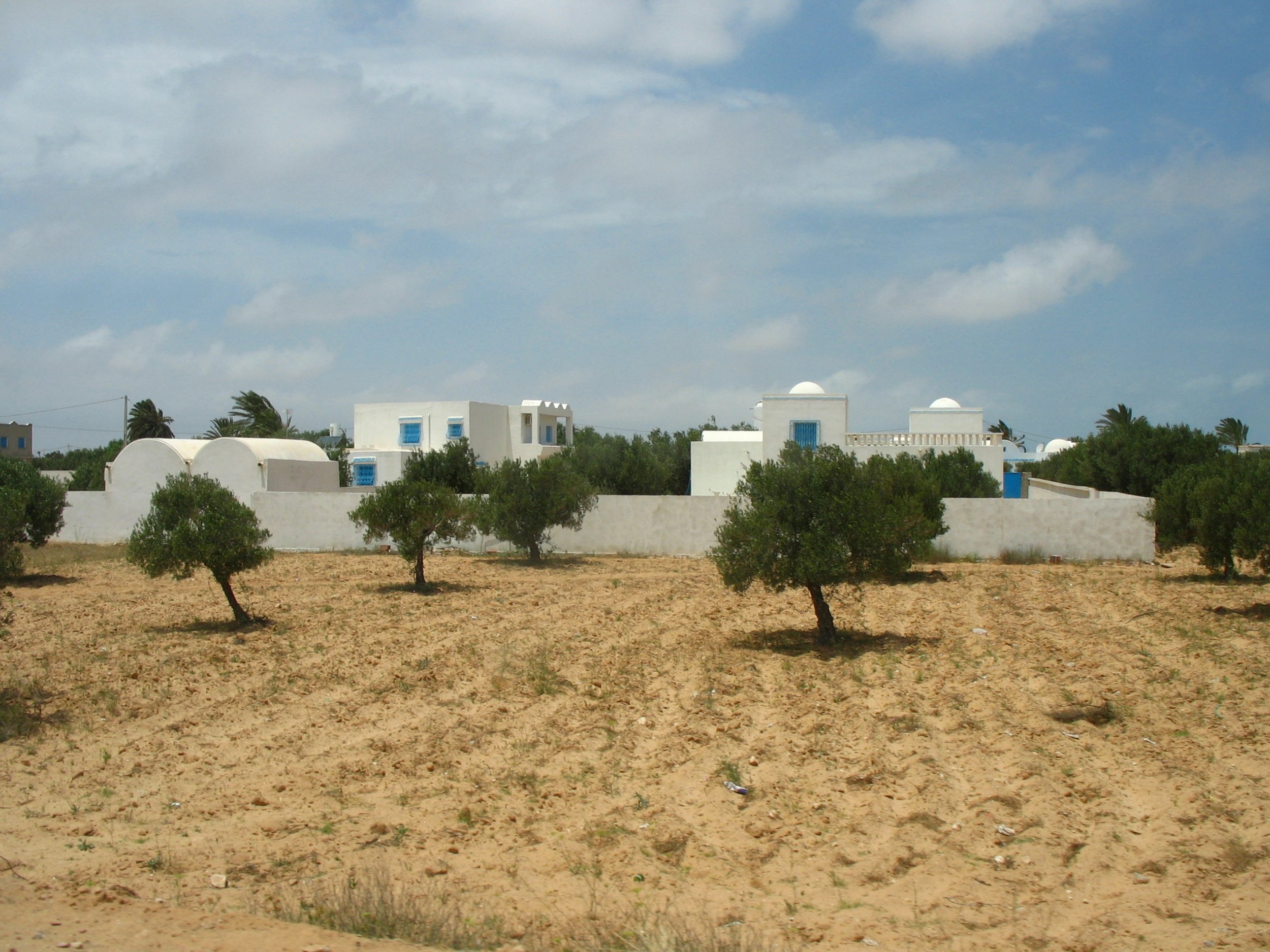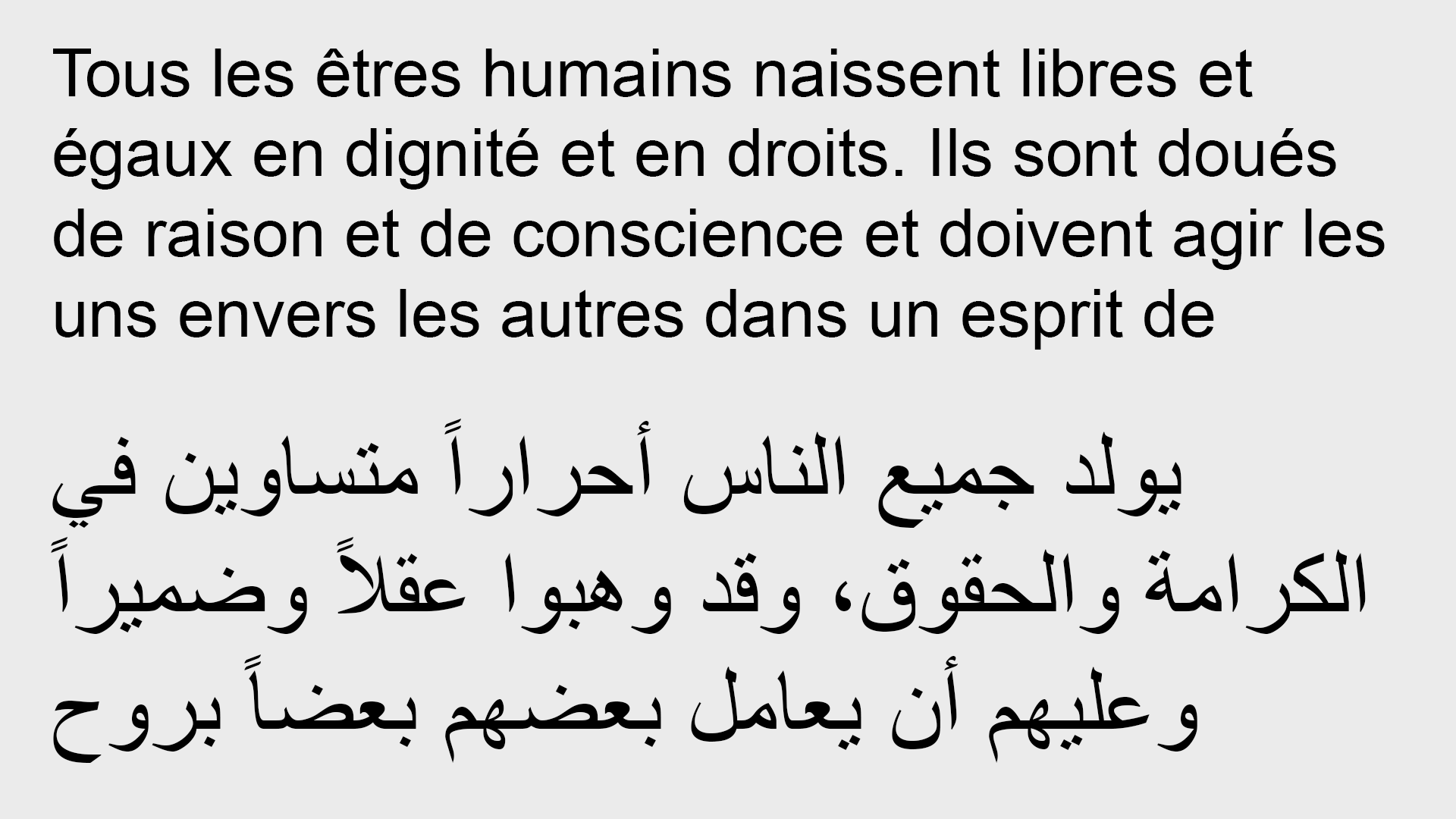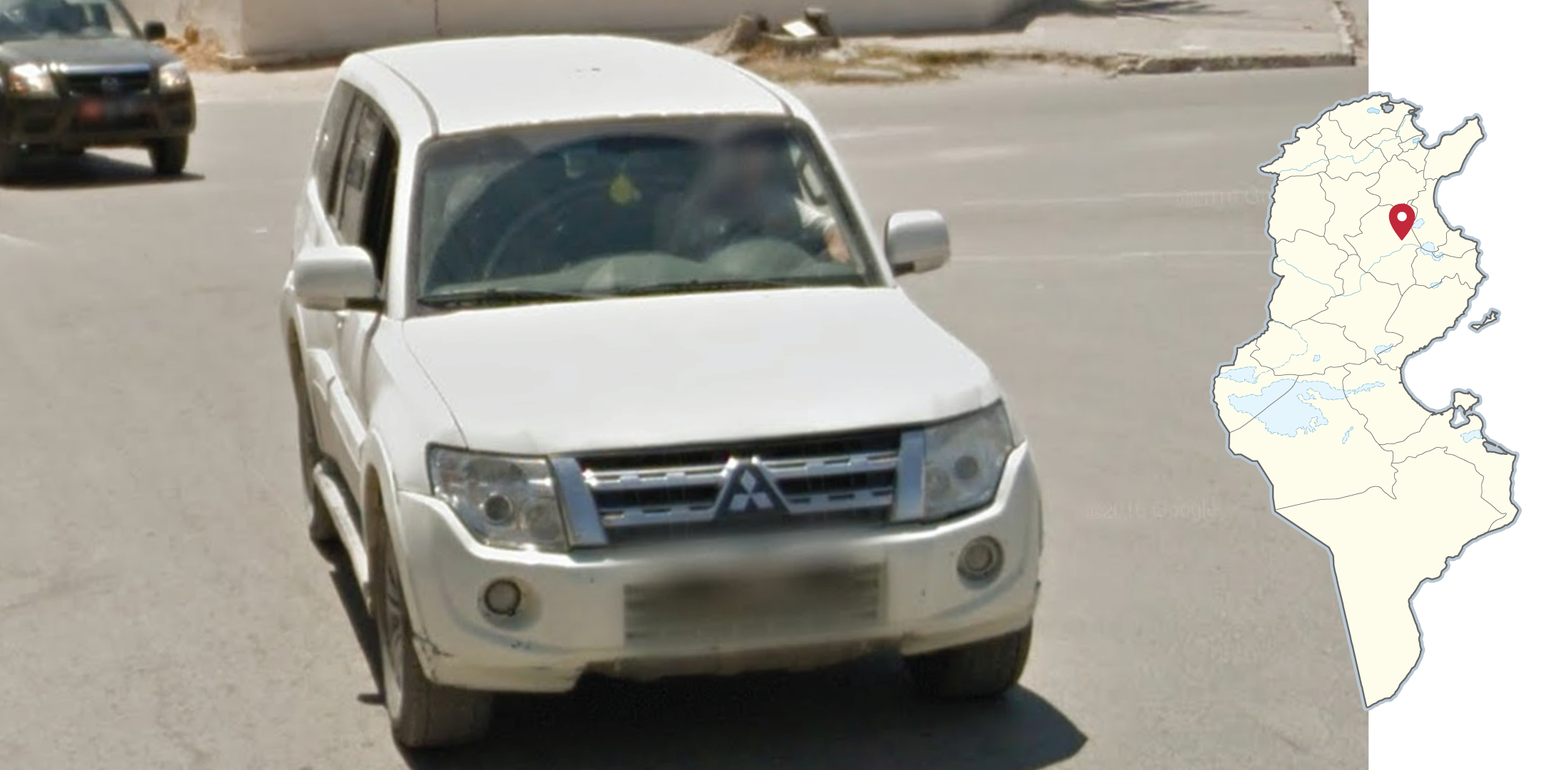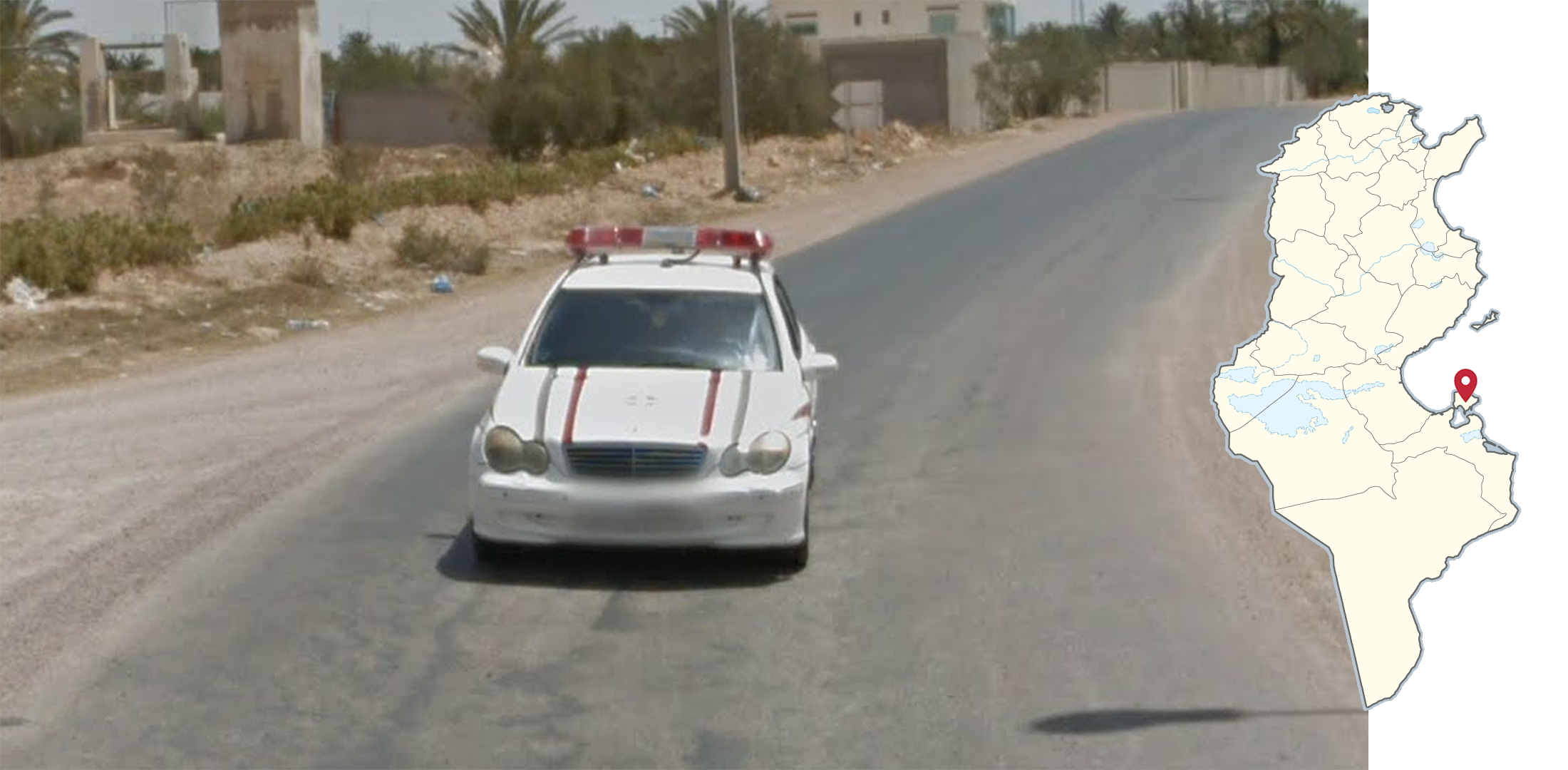
Tunisia
One of the best ways to recognize Tunisia is that, in most coverage, the Google car is escorted by a follow car.
There are several different follow cars and these are four of the most commonly found ones.
NOTE: Follow cars can be in front of the street view car, or very far behind. Make sure to pan and zoom if you do not find them immediately.
Tunisia usually has white road lines. Outer road lines can be dashed or solid.
NOTE: A few roads in Sfax have yellow middle lines.
In Tunisia, both French and Arabic are common. The Arabic script can be identified by its lines and dots. You can often see bilingual signs.
NOTE: The UAE and (more rarely) Jordan use English and Arabic.
These white concrete markers with a rounded red or yellow top can be found throughout Tunisia. The top can be red, yellow, or green.
NOTE: They are very useful for pinpointing your exact location. On either side, they show the distance in kilometres to the nearest town. The side facing the road shows the road number.
Tunisia has a fairly unique stop sign with Arabic and Latin script.
NOTE: Similar stop signs can be found in Jordan and the UAE. However, Israel and Palestine use a different unique stop sign with a hand instead of text.
Tunis, the capital of Tunisia, has a lot of different follow cars. Most of them can be found all over the city. The light green Toyota can also be spotted here.
The island of Djerba can sometimes have a distinct vibe. There tend to be a lot of palm trees. Whitewashed, traditional buildings with blue doors and windows are common.
NOTE: Not all locations on the island will have this distinct vibe. A lack of a follow car is another good way to confirm that you are on Djerba
An offroad from road P12 southwest of Sousse can be recognised by the dark pavement surrounded by bright sandy soil combined with the east-west road angle. The eastern part of the road is fairly vegetated, with large numbers of prickly pears, while the western part of the road is very arid with little to no vegetation.
Trekkers can be found all over the country, even in places far away from the area with car coverage. Coverage includes archaeological sites, forts, mosques, and a Star Wars set, among other things.






























